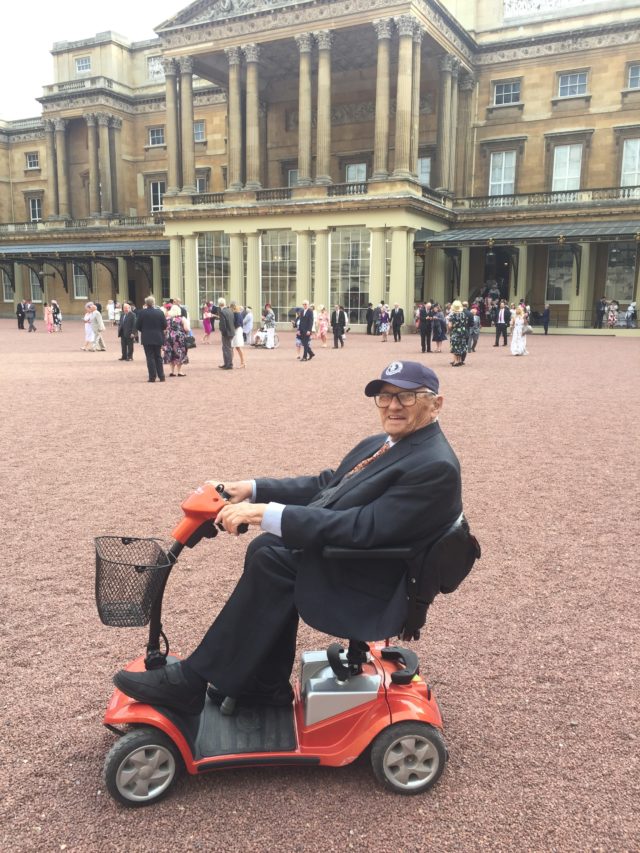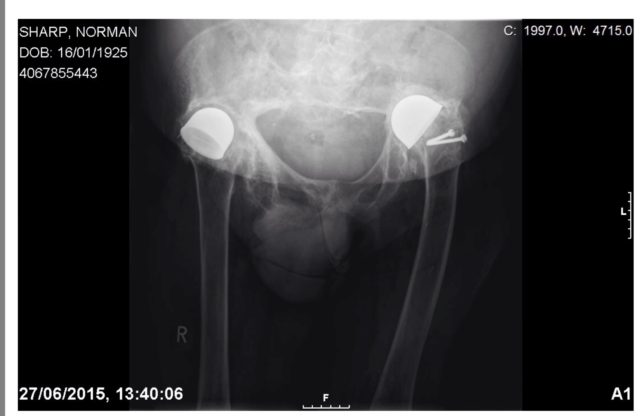
A 93-year-old man who had one of the first hip replacements on the NHS in 1948 has said the establishment of the health service is the best thing to happen in his lifetime.
Norman Sharp, from Trowbridge, Wiltshire, is marking 70 years of having his hips fitted, as the NHS celebrates its 70th anniversary.
The great-grandfather of 14 is the holder of the Guinness World Record for the longest-lasting hip replacement.
“They came up with the national health system and I’ve got to say, it’s the best thing that ever happened in my lifetime,” Mr Sharp told the Press Association.
“There were a lot of nasty things that happened like wars and bombings and terrible things like that.
“But the National Health has got to take the cake – even better than the cream on the bottle of milk.”
A modern artificial hip joint is designed to last for at least 15 years, according to the NHS.
Mr Sharp’s record-breaking left hip – replaced three weeks before his right – is 69 years and 111 days old.
He believes he was one of the first patients to undergo a hip replacement on the NHS.

“I am absolutely amazed,” he said.
“I can’t believe it myself because today everybody is talking about replacement hips and knees and it is the operation of the century, that’s what the doctors call it.
“Now I’m here, I appreciate what it was all about.
“I was a guinea pig, and I just feel happy that I was involved in people today having their pain looked at and eased as best the doctors can do.”

Mr Sharp was first taken ill when he was five years old, developing septic arthritis which left him in severe pain and having difficulty moving.
He was transferred to Royal National Orthopaedic Hospital in Stanmore, London, where his hips were fused, leaving him unable to walk normally.
“It took them then about 18 months to teach me to walk from the knees, because that was going to be my life ahead,” he said.
“And that’s how I lived my life from 1931 to 1948.”
However, Mr Sharp said it did not hold him back.
“I lived my life and never realised I had a disability, there was nothing I didn’t do,” he said.
“If the boys, my mates and that, climbed trees, I climbed trees, but I went up like a monkey.”
Mr Sharp had his leg straightened in 1939, but his treatment was suspended after war broke out.
A decade later, he received a letter from the Royal National Orthopaedic Hospital asking him to come in, and he was informed he had been chosen for experimental treatment by surgeon Philip Newman.
On December 1 1948, at the age of just 23, Mr Sharp had what is believed to be one of the first hip replacements on the NHS, using a Vitallium cup.
Three weeks later on December 22, his second hip was fitted with an implant.

Mr Sharp said: “I don’t want to brag or speak too soon but I went back to Great Portland Street about six months, nine months later to see my surgeon as a check-up and that is the last time anybody has discussed my hips, or seen them, or tested them.
“I’ve never even had an aspirin for them. No pain, nothing.”
Mr Sharp has four sons, 17 grandchildren and 14 great-grandchildren.
His implants are an alloy of cobalt and chrome, first developed in 1932 and still used today, according to the Royal National Orthopaedic Hospital.
The longevity of the hip replacement is testament to the surgeon’s skill and standard of engineering at the time, it said.
The NHS will celebrate its 70th anniversary on July 5.


Comments: Our rules
We want our comments to be a lively and valuable part of our community - a place where readers can debate and engage with the most important local issues. The ability to comment on our stories is a privilege, not a right, however, and that privilege may be withdrawn if it is abused or misused.
Please report any comments that break our rules.
Read the rules here